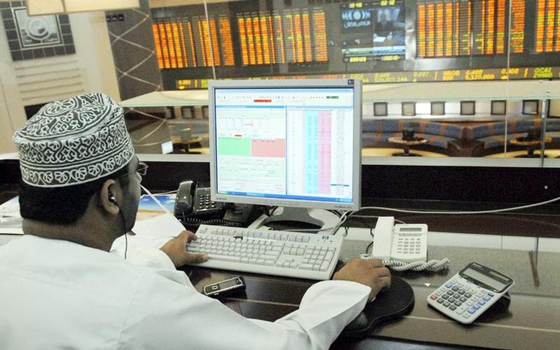A return to the international bond market, combined with fiscal reforms and an increase in oil prices, is bolstering government efforts to bridge Oman’s budget deficit.
After an absence of almost 20 years, Oman tapped the international bond market in June to raise $2.5bn in two separate tranches.
The government has said the money raised will be used to address a funding shortfall in the budget caused by the fall in energy revenues.
This year’s deficit is projected to be OR3.3bn ($8.6bn), well down on the OR4.5bn ($11.7bn) revenue gap recorded in 2015.
Investor uptake
Interest in the bonds was strong, attracting more than $6bn worth of subscriptions, with applications coming from more than 520 investors.
The $1bn bond, which matures in 2021, has a nominal interest rate of 3.625%, while the $1.5bn tranche, which has a maturity date of 2026, was sold at a rate of 4.75%.
In mid-June Moody’s assigned a definitive “Baa1” rating with a stable outlook to the issue, saying that while government debt could reach as high as 33% of GDP by next year, Oman’s financial buffers were sufficient to provide support through the process of fiscal and external adjustment. The rating for the bond was in line with Moody’s position on Oman’s broader credit rating.
Oman’s long-term government bond and issuer rating is supported by high levels of wealth, fiscal space offered by relatively low levels of general government debt and still sizeable government financial assets, the ratings agency said.
This came after a downgrade in May. Citing concerns over the effect an extended period of weakened energy prices could have on Oman’s sovereign credit profile, Moody’s lowered the sultanate’s long-term government issuer rating from “A3” to “Baa1” with a stable outlook.
Private sector to benefit
According to Hamood Sangour Al Zadjali, executive president of the Central Bank of Oman, the recent bond sale may not be Oman’s only foray into international markets.
“To avoid draining liquidity from the local banking system, the Omani government is turning to alternative funding sources, such as procuring a $5bn-10bn loan from the international market,” he told OBG.
Any future borrowings would likely depend on developments within the local economy as well as global energy markets, with the recent rebound in energy prices removing some of the urgency to raise further funds.
As Oman closed the book on its bond sale, prospects for the economy and for narrowing the budget deficit looked brighter.
Prices for Omani crude had almost doubled as of June since hitting lows of $23.72 per barrel in January, the weakest in a decade. Growing demand saw futures contracts for July trading on the Dubai Mercantile Exchange at above $47 in early June.
Though still subject to fluctuations and external shocks, the upward momentum in energy prices is expected to ease some of the pressure on Oman’s budget.
Positive effects
The relatively large government borrowing program to fund the budget deficits had put pressure on banking sector liquidity, Abdulaziz Mohammed Al Balushi, group CEO of investment firm Ominvest, told OBG.
“This is evident in banks’ deposit rates, which have increased by at least one percentage point to 3.5-4.5% for two-year fixed deposits,” he said. “Hence, it is challenging for private sector companies to access funds from banks in the current environment.”
As such, the return to the international market by the government should have a positive effect on private lending, freeing up more liquidity in the domestic financial system and helping drive down borrowing rates.
Broader belt tightening
The stepped up borrowing campaign is just part of a broader effort to balance the budget.
Earlier this year the government moved to reduce subsidies on petrol and diesel, while price increases for some utilities and liquid petroleum gas are also being considered, along with the introduction of a goods and services tax.
At the end of May the State Council and Majlis Al Shura jointly voted to approve a proposal to increase the corporate tax rate from 12% to 15%.
The increase, along with plans to more strictly enforce corporate taxation, is expected to raise between OR125m ($324.6m) and OR250m ($649.3m) in revenue per year.
Though yet to be ratified, the joint session of parliament also backed a proposal in late May to increase taxes on petrochemical and mining companies, with the tax rate for liquefied natural gas companies to rise from 15% to 55%.
Taxes on petrochemical companies and non-energy natural resource exports, meanwhile, could see their base tax rate rise from 12% to 35%, though these measures have prompted concerns from some stakeholders that such steep hikes could curb appetite for investment.
Oxford Business Group
27 July
























































